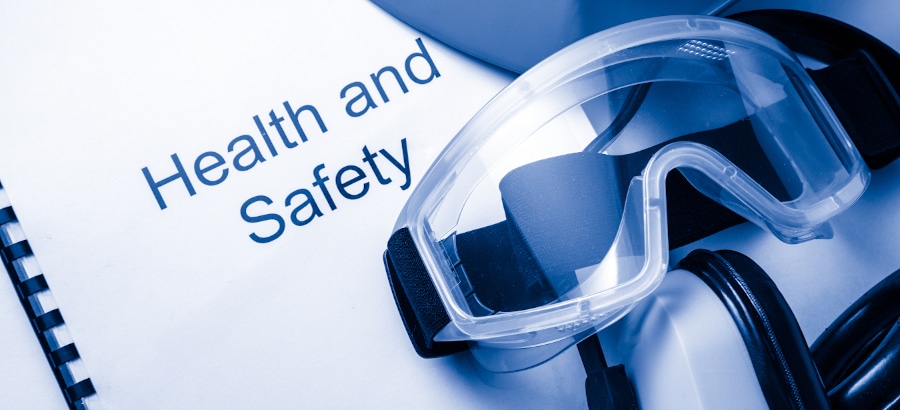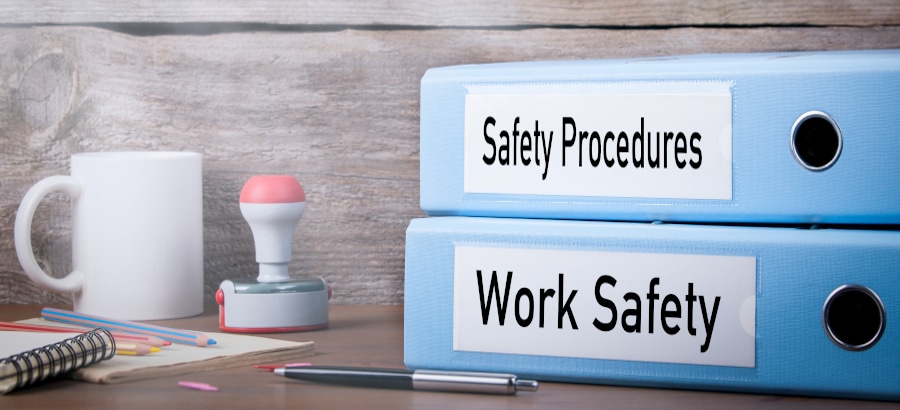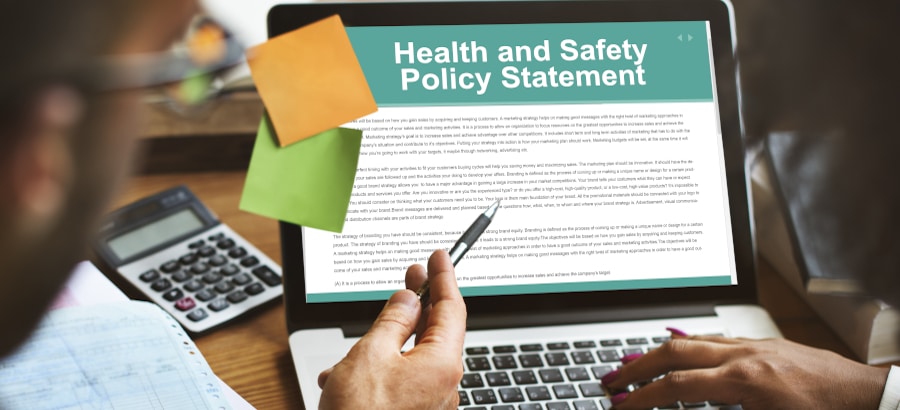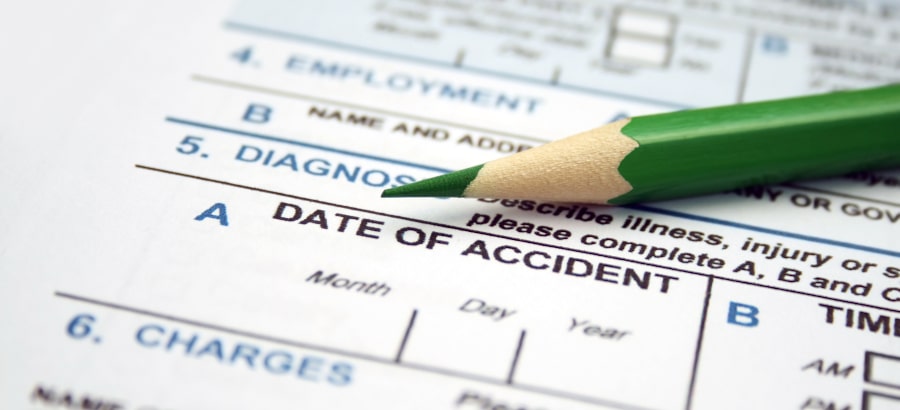With focus of attention centred on the current Covid-19 pandemic, it is easy to lose sight of the Health and Safety law around the continuing duty of care small to medium businesses have for their employees. Providing additional hand sanitiser or washing facilities is a sensible precaution for flus and colds, but this currently is merely advice to reduce the economic impact to your business and not (at time of writing) Health and Safety law with which you must comply.
We here at IRIS FMP have complied a handy article to refresh your awareness of Health & Safety legal duties, in the guide below.

If you are starting a new business, you need to keep health and safety in mind. Even if you are just opening a home business in your downstairs office, you have to comply with specific legislation and have a duty of care towards your employees.
It can be complicated. We understand that, so we have created this guide to Health and Safety at Work. In this guide, we will outline your responsibilities as an employer and the rights of your staff.
This guide will also go through the documentation you need to stay compliant, including risk assessments, training and employee welfare.
Who are you responsible for?
As a business owner, you are responsible for the health and safety of everyone affected by your business. This doesn’t just mean your staff.
Visitors, whether for business or just members of the public are within your duty of care while they are on your premises.
You are also responsible for anyone affected by goods or services you sell.
You must also have employers’ liability insurance in order to comply with the law. The select exceptions to this include businesses with no employees or a family business where all of your employees are also close relatives.
Employer responsibilities
Under the Health and Safety at Work Act, every employer has…
“…a duty to ensure that, so far as is reasonably practicable, the health, safety and welfare of employees are protected.”
Breaching your duty of care may result in a civil case being brought against you. You may also face criminal prosecution by the HSE.
In order to cover all types of business, the Health and Safety at Work Act is written in general terms. So, in addition to complying with these rules, you may also be subject to more specific compliance depending on your industry or situation.
Employee health and safety responsibilities
Health and safety is not a one way street. Employees also have a common law duty of care. This means that they must exercise “reasonable skill and care” in their relationship with both their employer and colleagues.
In addition, the Health and Safety at Work Act requires employees to take reasonable care for the health and safety of themselves and other people at work. This extends to co-operating to enable their employer to fulfil a legal duty.
So, employers can’t be entirely responsible for hazards they aren’t informed of by their staff. Employees must also not interfere with anything provided in the interests of health and safety at work.
An employee who is in breach of his or her duties under the Act may be liable to pay a fine if found guilty. They may also be dismissed from employment for being in breach of a contractual duty to carry out work with proper care and skill.
30.7 million working days are lost due to work-related ill health every year

Relevant legislation
Health and Safety is a broad topic. As such, there are many laws that cover the nature of your duty of care as an employer.
Essentially, the regulations say that if you want to pay someone to do something, you must give them the means to do so safely.
Some of the most frequently used EU regulations are as follows:
The Management of Health and Safety at Work Regulations 1992
The management regulations require every employer to make risk assessments of:
- The health and safety of their employees while at work
- The risks to the health and safety of persons not in their employment arising out of or in connection with the conduct by them
The Workplace (Health, Safety and Welfare) Regulations 1992
These regulations address common factors in workplace accidents. These include:
- General maintenance
- Ventilation
- Temperature of indoor workplaces
- Lighting
- Cleaning
- Room dimensions
- Condition of floors and traffic routes
Workplace regulations also cover falls or falling objects, washing facilities, escalators, doors and gates.
The Manual Handling Operations Regulations 1992
The regulations specify that…
“…so far as is reasonably practicable, each employer must avoid the need for his employees to undertake any manual handling operations at work which involve a risk of their being injured.”
So, if staff don’t have to perform physical actions, you shouldn’t make them. If this is unavoidable, you have to undertake a risk assessment. This must detail:
- The nature of the task
- The nature of the load being handled
- The working environment
- The expected capabilities of the individual
From there, you can create policies and training to protect your staff as best you can.
The Provision and Use of Work Equipment Regulations 1998
The Provision and Use of Work Equipment Regulations specify that work equipment must be suitable for the work and in good condition. You must also provide instructions and training for any equipment.
The Personal Protective Equipment at Work Regulations 1992
Finally, you must provide protection to the employee for the use of any equipment. Such personal protective equipment that is provided must be assessed as being suitable and must be properly maintained.
This means providing masks for welding torches, or ergonomic keyboards and chairs for computers.
You must also provide training on the protective equipment so you know that staff are using it properly.
In 2017/18, the HSE issued £72.6 million in fines
How do you write a health and safety policy?
If you employ 5 or more people, there’s no way around it – you must have a written health and safety policy.

The policy should outline your general approach to health and safety at the workplace. Your policy should cover three areas:
1. Statement of intent
State your general policy on health and safety at work, including your commitment to managing health and safety. As the employer or most senior person in the company, you should sign it and review it regularly. Make sure your policy continues to deliver the best interests for your business.
2. Responsibilities for health and safety
Your health and safety policy should list the names, positions and roles of the people in your business who have responsibility for health and safety.
3. Arrangements for health and safety
Give details of the practical arrangements you have in place. Show how you will achieve your health and safety policy aims.
This might include:
- risk assessments
- training
- use of safety signs or equipment
You must ensure that you are doing everything reasonable to protect those under your duty of care. If you feel like you could do more, do more. And always keep a record of your policies and process.
Policies are not the end of your responsibility
Responsibility still stops with you and the other directors of your company when it comes to liability for health and safety breaches. Having a policy alone is not enough to rid you of liability.
You have to show that you both enforce it and have circulated this policy to employees.
That being said, getting this right is essential. A health and safety policy document will inform your processes and protect your business.
Slips account for 31% of workplace injuries
Risk assessments
You have to do risk assessments to stay compliant. But what hazards should you take into account?
Risk assessments for equipment
One of the largest sources of risk comes from devices and equipment. When assessing risk from work equipment, you need to:
- Detail any regulations that apply
- Set processes for inspection and maintenance
- Consider how the equipment will be used
- Set out training needs
Risk assessments for work environments
You must also make sure that you provide a safe and healthy environment for employees to work in. Whether it is a building site or an office.
- Desks should be suitable for people using them, and chairs should provide sufficient support
- The layout of your office or shop floor should allow people to move about safely
- Your workplace should provide for employee welfare more generally
92% of UK workplaces undertake regular health and safety risk assessments

The level of employee training depends on the level of risk
But different businesses and sectors have different levels of training. Generally speaking, manual handling jobs have higher training requirements.
If you are a low-risk business, providing simple information or instructions is usually enough. If you are an office-based business, simply make sure everyone has the right level of information on:
- hazards
- risks
- measures in place to deal with those hazards and risks
- how to follow any emergency procedures (e.g. fire alarms).
Tips for H&S Training
|
Keeping training records will help you decide if refresher training is needed. After any training sessions, get feedback from your staff. If they feel like they still need more support or training, adjust your training accordingly. Effective communication will result in effective training.
Who needs training?
Training is expensive. Especially for start-ups and small businesses. Not only do you need to provide resources, it costs time. Training must be offered during work hours, so think carefully about who really needs training and issue it accordingly.
People who need training include:
- new recruits
- people changing jobs or taking on extra responsibilities
- young employees
- health and safety representatives
Provide general and specific health and safety information
As an employer, you must display at least one copy of the Health and Safety Law: What You Need To Know poster, which is available from the HSE website.
You must also keep staff informed about the potential risks to their health and safety, and the steps you are taking to control them.
More specifically, you must display appropriate safety signs where there are particular hazards. These might include slippery surfaces or dangerous chemicals.
How do you provide for employee welfare?
Health and safety law says you must provide for your employee’s welfare in the workplace. This means they have the right to specific amenities.
It also means staff are entitled to specific working conditions, including at least 11 cubic feet of working space per worker.
Welfare needs also include providing:
- Adequate lighting
- Space and ventilation
- A comfortable temperature for your employees
- Rest areas for staff
- Changing areas if staff require protective clothes or uniforms
- Clean and working toilets
- Hot and cold water, soap, and towels/hand dryers
- Drinking water (either from the mains or in bottles)
- Regular waste removal
Poor working conditions cost businesses in the UK £15 billion a year
What happens when an accident occurs?
If an accident occurs at work and is serious enough, RIDDOR (Reporting of Injuries, Diseases and Dangerous Occurrences Regulations) rules state that you must report this to HSE or your local authority.
Reportable injuries to workers or those that cause them to be off for more than three days must also be recorded.
Accidents should also be recorded in an on-site accident book, in accordance with best practice.
Your liability for an accident will be based on how thorough your risk assessments and policies are.
If you have done everything reasonable to protect those under your duty of care, you are covered. But this is judged on a case by case basis.

Preparing for a health and safety inspection
The health and safety inspector may visit any workplace without giving notice. For a routine inspection, they will usually phone ahead to make sure the person they need to talk to is in.
The inspector will judge whether you are aware of the risks of injury and ill health in your business and make sure you are taking action to control them. They will usually want to check:
- The workplace
- Work activities
- Your management of health and safety
- Whether or not you are complying with health and safety law
Ensure that you have the following to hand:
- Your safety policy
- Any risk assessments
- Records of any inspections of work equipment which are required by law, such as lifting equipment, pressurised systems or local exhaust ventilation to control exposure to substances used at work
- Any written safe working methods
- Any records of safety training carried out
It’s a good idea to make sure that these documents are located in a central place, whether that’s in a filing cabinet or a database. That way, they’re always to hand when you need them.
Health and Safety for Small Businesses
Health and safety is a necessary part of life for any business and it usually falls to HR to handle. To help support your new business, we offer comprehensive HR software. With comprehensive functionality, dashboard intelligence, and a completely integrated single HR database, Amity online HR software takes away the hassle of HR and payroll management.
Sources
http://www.hse.gov.uk/statistics/causinj/index.htm
http://www.hse.gov.uk/statistics/overall/hssh1718.pdf
http://www.hse.gov.uk/statistics/european/european-comparisons.pdf


